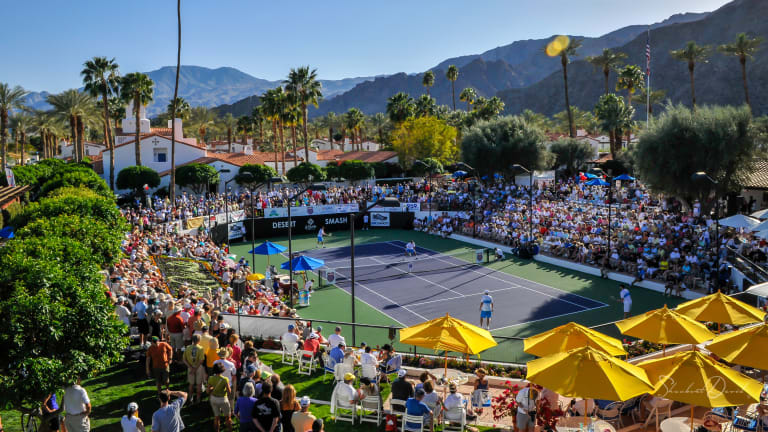Tennis has been transformed over the last five decades by TV, money, technology, equipment, fashion and politics. But through all of that, the players have remained at the heart of the game. As part of our golden anniversary celebration of the Open era, Tennis.com presents its list of 50 best players—the Top 25 men and the Top 25 women—of the last 50 years. You'll be able to view the entire list in the March/April issue of TENNIS Magazine.
(Note: Only singles results were considered; any player who won a major title during the Open era had his or her entire career evaluated; all statistics are through the 2018 Australian Open.)
Years played: 1988–2002
*Titles: 64
Major titles: 14*
“I let my racquet do the talking,” Sampras once said, in a typically succinct self-summation. “That’s what I’m all about, really. I just go out and win tennis matches.”
The mix of down-to-earth honesty and unshakable self-confidence in those words was characteristic of this quiet Californian, who was happy to be known as a tennis player rather than a star.
Few players’ racquets have ever spoken as loudly. When Sampras played his last match, at the 2002 US Open, he had won more major titles, 14, than any other man; he had won more Wimbledon titles, seven, than any man in the Open era; he had spent more weeks at No. 1, 286, than any man; and he had finished a men’s-record six seasons—all of them in a row—at No. 1.
While many champions pioneer new ways of playing, or at least go with the flow of their eras, Sampras traveled back in time to find his game. Until he was 13, he played the standard style of his day, swinging with two hands on his backhand and grinding from the baseline. But with a pro career and the slick grass at Wimbledon in mind, Sampras made the difficult decision to switch to a one-hander and transform himself into a net-rusher. If those things were good enough for his hero, Rod Laver, they must be good enough for him.
Stories of the Open Era: Rod Laver
